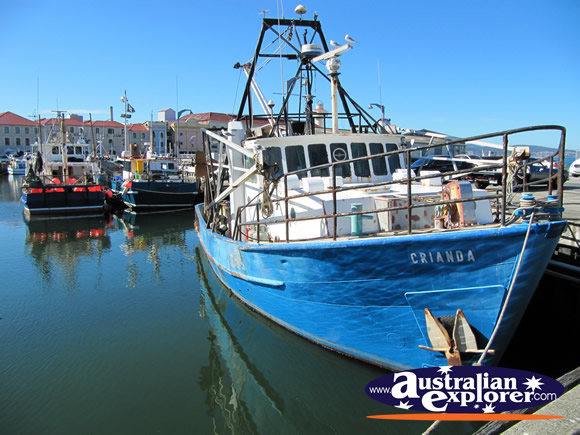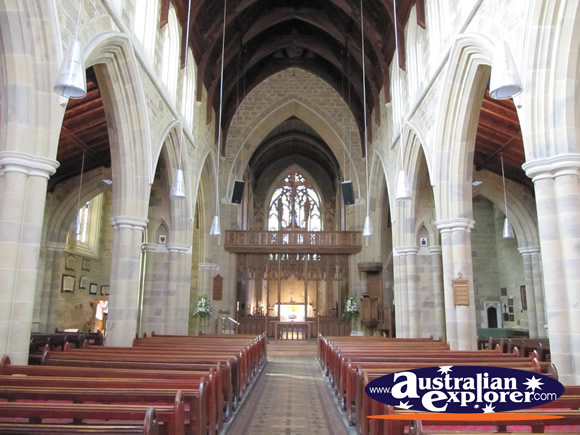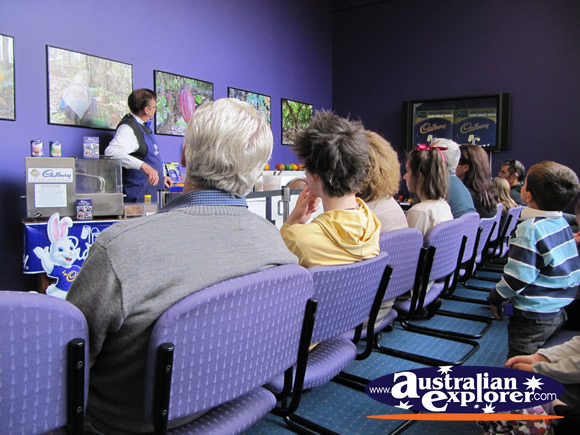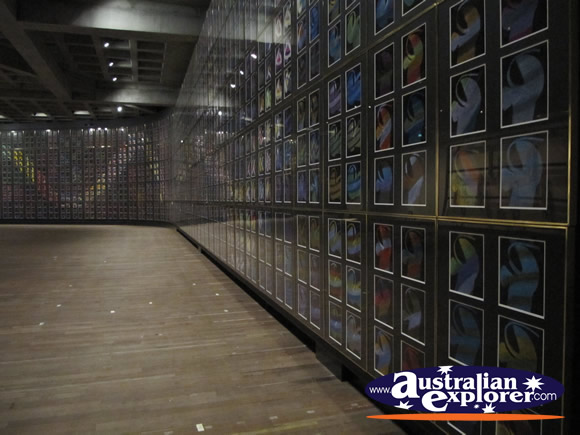Hobart, the capital of Tasmania, holds two records. One as the Southernmost capital city in Australia and the other as the 2nd oldest capital city. Hobart offers both history in its Georgian buildings and harbour, and modern elements. It is surrounded by Derwent River and Mt. Wellington.
The city began as a town of tents and huts with a population of 262, but was named a city in 1842. Important industries included whaling, shipbuilding and export of corn and wool.
Hobart may well be described as Australia's smallest and most historic capital in close proximity to beautiful natural surrounds. Mt Wellington offers a fantastic opportunity to view the city from a wonderful vantage point.
 Hobart city is fairly small and easy to navigate with the main streets laid out in a grid. Elizabeth Street Mall is considered the centre of shopping activity whilst Salamanca Place offers the visitor something a little different. Hobart offers pretty much everything a visitor could demand and in many ways so much more. The city has many beautifully maintained historic buildings together with modern facilities. The Hobart Aquatic Centre offers locals and visitors alike fantastic swimming facilities together with a gym and access to spa baths, sauna and steam room facilities.
Hobart city is fairly small and easy to navigate with the main streets laid out in a grid. Elizabeth Street Mall is considered the centre of shopping activity whilst Salamanca Place offers the visitor something a little different. Hobart offers pretty much everything a visitor could demand and in many ways so much more. The city has many beautifully maintained historic buildings together with modern facilities. The Hobart Aquatic Centre offers locals and visitors alike fantastic swimming facilities together with a gym and access to spa baths, sauna and steam room facilities.
Whilst Elizabeth Street might be popular for shopping, Salamanca Markets held each Saturday are what Hobart is famous for. The setting is unique, being positioned alongside beautiful Georgian warehouses and offering a fresh mix of crafts, gifts, fruit and vegetables together with a variety of music and so much more.
History is a big part of Hobart's attractiveness to the visitor with many of the most photographed landmarks being the Georgian warehouses along the waterfront together with the well preserved colonial district of Battery Point. A university and casino are further along the river on Sandy Bay. To the north of the city is the popular Royal Tasmanian Botanical Gardens and North Hobart, a rich collection of shops and cafes.
A place of interest for history lovers in Hobart is the St David's Cathedral. St David's Cathedral is a traditional cruciform (cross) design which was the design of English architect G.F Bodley. In length it is 50m long and 20m wide and has seating for 750 people.
 The site of St David's Cathedral was originally a wooden church building which blew down in fierce gale winds just after 1810. A new stone building Old St David's was consecrated on the site in 1823.
The site of St David's Cathedral was originally a wooden church building which blew down in fierce gale winds just after 1810. A new stone building Old St David's was consecrated on the site in 1823.
In 1868 the foundation stone for the Tower and Cloisters was laid in 1892. The Chancel, Sanctuary and Nixon Chapel were conscrated in 1894 with the Cloisters and Tower finally completed in 1936.
The five lane Tasman Bridge crosses the Derwent River and is an attraction in itself, having suffered a partial collapse in 1975 when an ore carrying ship collided with the pylons sinking the vessel and killing 12 people. Today the bridge is a popular attraction for the novice and professional photographer alike.
Hobart is a great location for visitors to initially base themselves to explore Tasmania's many attractions. In terms of tours one of the most popular tours in Tasmania has to be the Port Arthur Ghost Tour. Other popular tours that commence from Hobart include visiting Mount Wellington and the local wineries. The prospect of cycling downhill from the Mt Wellington summit on a mountain bike is hard to resist; not much peddling, but plenty of braking! A visit to the Cadbury's chocolate factory is also very popular.
 Hobart is a great location for visitors to initially base themselves to explore Tasmania's many attractions. In terms of tours one of the most popular tours in Tasmania has to be the Port Arthur Ghost Tour. Other popular tours that commence from Hobart include visiting Mount Wellington and the local wineries. The prospect of cycling downhill from the Mt Wellington summit on a mountain bike is hard to resist; not much peddling, but plenty of braking! A visit to the Cadbury's chocolate factory is also very popular.
Hobart is a great location for visitors to initially base themselves to explore Tasmania's many attractions. In terms of tours one of the most popular tours in Tasmania has to be the Port Arthur Ghost Tour. Other popular tours that commence from Hobart include visiting Mount Wellington and the local wineries. The prospect of cycling downhill from the Mt Wellington summit on a mountain bike is hard to resist; not much peddling, but plenty of braking! A visit to the Cadbury's chocolate factory is also very popular.
 MONA (Museum of Old and New Art) may be controversial but it is certainly popular with locals and visitors. The museum is free to enter, be warned that to some people it might be classified as shocking, even distasteful but to others it is an exceptionally enlightening experience. Whichever view you take, certainly the actual Museum itself is a construction masterpiece being built underground and offering several floors of old and new art, together with fine dining and wine bar within the grounds.
MONA (Museum of Old and New Art) may be controversial but it is certainly popular with locals and visitors. The museum is free to enter, be warned that to some people it might be classified as shocking, even distasteful but to others it is an exceptionally enlightening experience. Whichever view you take, certainly the actual Museum itself is a construction masterpiece being built underground and offering several floors of old and new art, together with fine dining and wine bar within the grounds.
Many who haven't visited Tasmania are quick to point out that Hobart and the rest of the island is considered colder than other parts of Australia. Well, it is worth noting that Hobart is considered the second driest capital city in Australia, so whilst it may be considered colder, it is often drier.
Hobart is a truly wonderful city that offers so much in terms of history. Must do's are enjoying the views from Mt Wellington Summit, even cycling down on a mountain bike, visiting the nearby Cadbury's Chocolate Factory, experiencing the Salamanca Markets on Saturdays, visiting Bonorong Wildlife Park and hearing firsthand about the plight of the Tasmania Devils and of course seeing them in their native state of Tasmania. A trip to Richmond, a Georgian style village which is not far from Hobart, a day trip to Port Arthur is also essential as is Russell Falls and Huon Valley and so many, many other activities, attractions and tours.
Hobart offers tourist accommodation from hostels, hotels, and motels, to campsites and bed and breakfasts. There are a number of places to stay around Hobart, with the most popular being Battery Point, Glebe, New Town, North Hobart, Sandy Bay and West Hobart. Here you will find campsites, hotels and motels with a range of hostels and hotels in the city centre.


